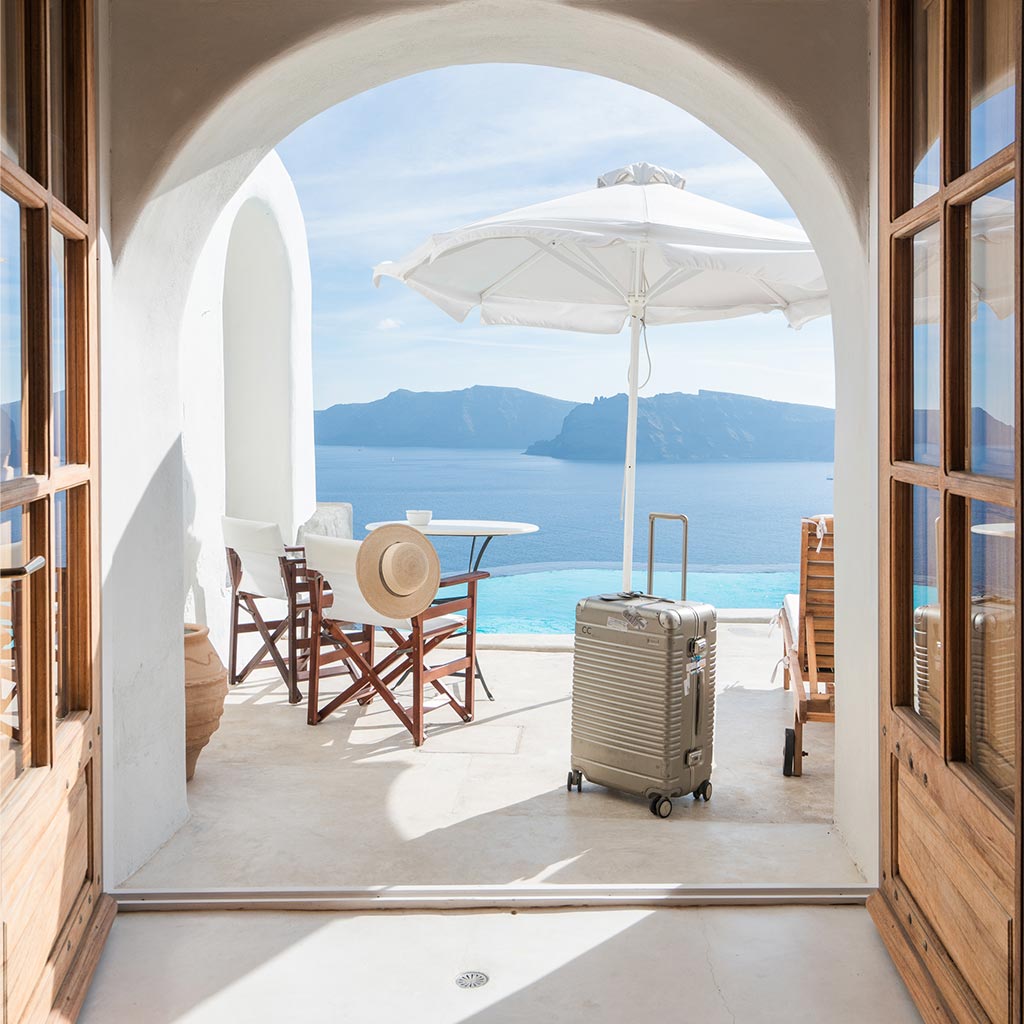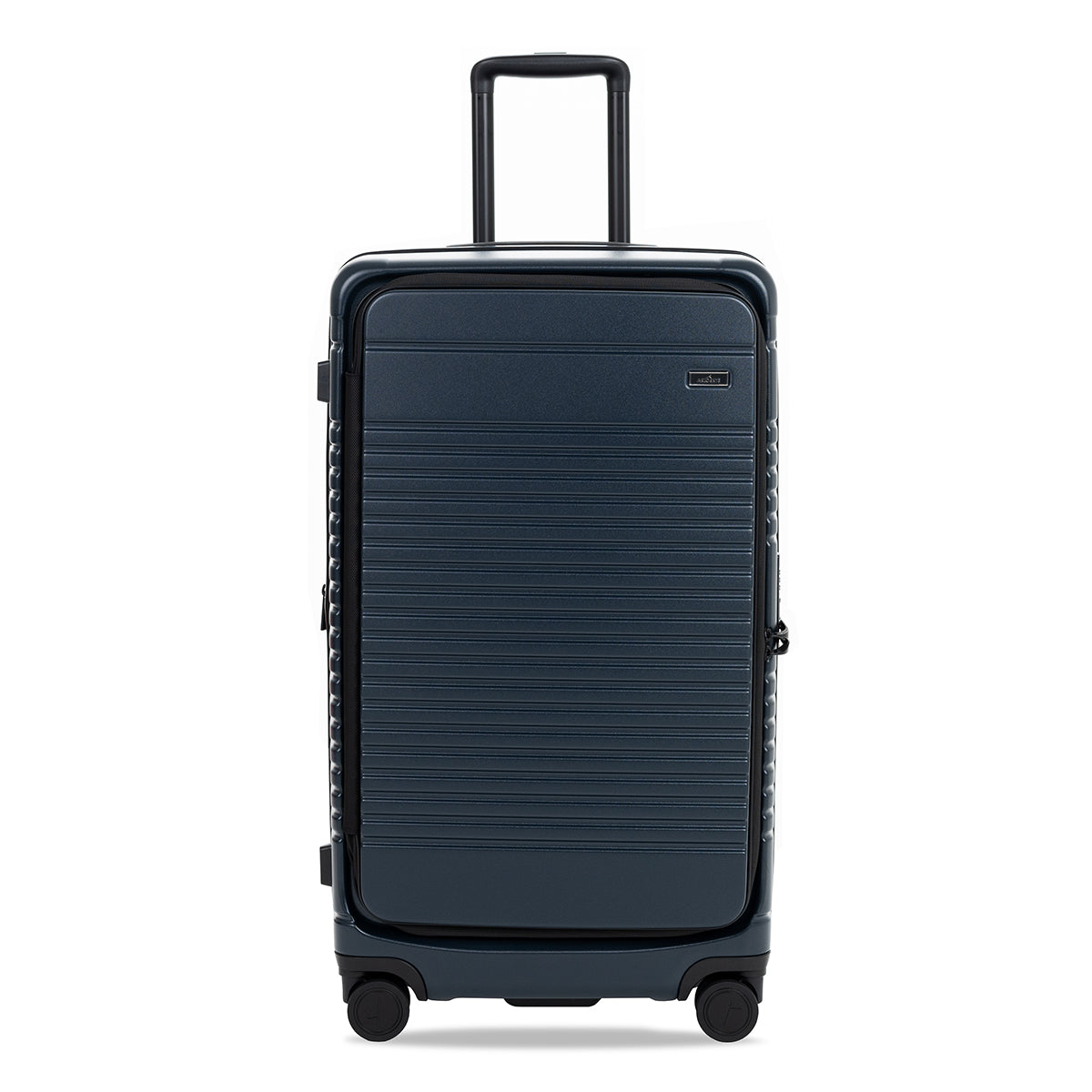Travel is stressful enough during the cold and flu season—aka winter and spring— and this year we have to deal with an added worry: the coronavirus (scientific name: SARS-CoV-2). The disease contracted from this virus is officially called COVID-19, and while the illness poses a high risk primarily to the elderly and those with pre-existing conditions or weak immune systems, most estimates suggest that 80% of COVID-19 cases are mild and feel roughly like a flu, while 10-20% may necessitate hospital visits. Additionally, according to the Center For Disease Control (CDC), there is no evidence that children are more prone to contracting COVID-19. Nonetheless it is prudent to take as many precautions as possible when traveling to minimize the risk of contracting the virus. Here, we highlight seven essential tips to stay healthy during your travels.
 Oía, Santorini, Greece. Photo by Carley Rudd.
Oía, Santorini, Greece. Photo by Carley Rudd.
1. Wash your hands frequently (and bring alcohol-based hand sanitizers as backup)
The World Health Organization (WHO), CDC, and experts in infectious diseases all agree on the two best ways to avoid contracting and spreading COVID-19: wash your hands frequently for at least 20 seconds, and avoid touching your face. During travel, augment your hand-washing regimen by bringing along adequate amounts of travel-sized alcohol-based hand sanitizers (the alcohol level in these should be no less than 60%).
2. If you decide to wear a mask, use one with an N95 designation and discard after one day
There is debate in the medical circles about whether travelers should be wearing masks. Most medical professionals are currently not recommending the general public to wear masks, as it puts a strain on the supply available for healthcare professionals—and they are not guaranteed to filter out the coronavirus. However, most of the travelers we’ve polled prefer wearing a mask as a safety precaution. At some level, wearing one lowers the potential risk of contracting the virus, and it prevents you from inadvertently touching your face. So, it comes down to personal choice. If you decide to wear a mask, be sure to get a N95 respirator mask, which keeps out up to 95% of microbes as small as 0.3 microns. Coronavirus particles are smaller than 0.3 microns but the mask does protect you from inhaling large respiratory droplets from a cough or sneeze. Note that the N95 makes it more difficult for the wearer to breathe, and that they are strictly single-use only (we suggest that you swap them out each day). After removing them, wash your hands and safely dispose of them in a sealable trash bag.
3. Book a window seat to lower perimeter risk
According to the research by Biomathematician Howard Weiss at Georgia Institute of Technology in Atlanta, the best way of reducing your chances of contracting a virus is to book a window seat, avoid using the bathroom (as much as possible), and limit your interactions with the crew. Why? It lowers perimeter risk where the perimeter is defined as one row ahead, one row behind, and two seats on either side. Note that studies show that the chance of contracting a sick passenger’s coronavirus on a plane is fairly low. According to research featured in The Proceedings of the National Academy of Sciences, a passenger with the flu will likely only infect 0.7 fellow passengers per flight (and, it’s typically people within three feet of the infected passenger who run the highest risk of getting sick). However, an infected cabin crew member has the potential to spread the virus to 4.6 new people per flight. But don’t sit still if your row-mate appears ill. If someone sick is within your respiratory range, ask to move. While it’s not always possible to move seats, it’s worth asking—and, the crew might be able to offer a mask to the sick traveler. [Note: new research on COVID-19 suggests that, “….pathogen transmission can occur...if the exposure of respiratory droplets is within 6 feet and also includes contact with mucous membranes.”]. All in all, the chances of contracting the virus on a plane are lower than you think but it's prudent to be mindful of any visibly ill passengers that might be within your contraction zone. Last but not least, if you feel like you're getting ill, avoid traveling for a few weeks.
4. Wipe down all hard surfaces with anti-bacterial wipes
When seated inside the plane, use anti-bacterial wipes to wipe down your tray tables, arm rests, seat belt buckles, the TV screen, and windows—and bring tissues to open the bathroom doors. Also carry a few sealed disposable zip-lock bags to safely dispose of the wipes, tissues, and masks. A recent summary of the SARS-CoV-2 findings indicates that it remains unclear if transmission can occur from direct or indirect contact with contaminated surfaces. However, past coronaviruses have been able to survive for 24 hours outside the body.
5. Be flexible with your travel plans
If you’re flying for work, ask if you can purchase a refundable ticket (warning: these can be pricey), or purchase travel insurance. If you’re flying internationally and an airline is offering a refund, consider taking it. The international travel advisories by the CDC are constantly evolving, and the data of the COVID-19 outbreak outside of China is changing hourly. On the CDC travel advisory site, you’ll find three warning levels. Any countries with a Warning Level 3—there are currently four (Italy, South Korea, Iran, and China)—should be avoided. The site allows you to filter by destination and by type of traveler (options include families with children and sufferers of chronic disease).
6. Boost your immune system
A recent article from Cleveland Clinic suggests that the three key vitamins needed to boost your immune system—according to Registered Dietician Julia Zumpano—are vitamins C, B6, and E. All three vitamins can be found in fruits and vegetables, and B6 specifically can also be found in cold-water fish such as salmon and tuna. There is still significant debate on whether vitamin supplements help, but the consensus by medical professionals is that your body absorbs and uses vitamins and nutrients better when they come from a dietary source. Equally important to boosting your immune system: staying hydrated, especially during travel days. Plane cabins have very low humidity levels (hovering at only 10%). A great way to beat this is by drinking water frequently and bringing hydrating snacks—think cucumbers, celery, and watermelon—to eat on the plane. Last but not least: consider getting the flu shot this week. While it may not be helpful against SARS-CoV-2, flu season isn’t over, and contracting even a mild case will put strain on your immune system.
7. Avoid tourist traps, cruise ships, and indirect flights
As you plan spring and summer vacations, think about visiting smaller cities or regions that don’t attract lots of tourists. There are several benefits to such a trip: you’ll likely get more personable and attentive service, hotels and restaurants typically don’t overcharge, and you may lower your risk of contracting the coronavirus. If you are based in North America, some of our favorite, less-touristed beachside destinations include: the Oaxaca region on Mexico’s Pacific Coast, The Big Island in Hawaii, and Antigua in the Caribbean. Another consideration when planning for spring and summer travel: avoid cruise vacations. According to a recent Forbes interview with air quality and computational fluid dynamics expert at Purdue University, Qingyan Chen, "air-conditioning systems on cruise ships are not designed to filter out particles as small as the coronavirus, allowing the disease to rapidly circulate to other cabins." Airplanes, on the other hand, have excellent air-filtration systems that are capable of filtering out particles as small as the coronavirus. Last but not least, try to book direct flights—when possible—to avoid layovers at potentially crowded airports, as the less time spent in the airport, the less potential exposure to the coronavirus. And, try to choose destinations with shorter air travel times (1-4 hours), versus longer intercontinental flights. Arlo Skye customers: whenever traveling don't forget to use the laundry bag and shoe bags that come with your luggage. They're made with an anti-microbial fabric (as is the interior lining of your suitcase).









